#louise closser hale
Text
putterings, 279-277
or a chance word be the seed of an idea,
but most often, not
of the theater, the heap of garments,
the violet-tinted note, water,
anathematized method
idle theories or chimerical clues,
and the wide world in which to forget it all
intuitionism; anticipatory shades
—
puutterings | their index | these derivations | 20230320
6 notes
·
View notes
Text
not of the theater, the heap of garments, the violet-tinted note
Miss Herter felt for her stockings in the little hammock and began to draw them hastily on. To her this was ridiculous; but Drusilla was not of the theater, and by some curious mischance she must have heard of Johnny’s escapade. She scrambled on some clothes, anathematizing the heap of garments that would not go on straight.
Once out in the wet moonlight Emmy was afraid. Tramps hung about the station yards, and she wished the puttering engine which had gone ambling up a track toward the reluctant scenery car was nearer, for its company. Yet if she who walked alone through life had fear, what must be the quaking of sheltered Drusie! She moved toward the dingy station confident that the girl would be within the waiting-room. She peered through the window; the ticket agent was gone, but there was no runaway.
With real anguish she turned toward the waters of the lake. But feminine intuition dismissed the horror from her mind. It couldn’t be — when the water was so cold. And yet Drusied was different from them. She started to run swiftly toward the water’s edge.
“Miss Herter!” It was a welcome voice. Behind a pile of crated farming implements Miss Herter found her: smaller than usual, shaking but resolute, with the iron convention of her forbears in her face — and in her purse enough of Johnny’s money to take the train in half an hour to mother.
—
Louise Closser Hale, “Miss Herter’s Young Couple” — What Came of the Violet-Tinted Note and the Eating of “That Doughnut” — Illustrations by R. M. Crosby — in The Ladies’ Home Journal 27:1 (January 1915) : 19, 38 : link
same (U Michigan copy, via hathitrust) : link
Louise Closser Hale (1872-1933), actress, playwright, novelist
wikipedia : link
0 notes
Text
Born 150 Years Ago Today: Louise Closser Hale
Born 150 Years Ago Today: Louise Closser Hale
Louise Closser Hale (1872-1933) was an early 20th century Renaissance woman: actress of stage and screen, magazine editor, author of numerous works of fiction and non-fiction, and playwright.
The Chicago native studied at the Boston School of Oratory and the American Academy of Dramatic Arts before launching her career as an actress with touring stock companies in the mid 1890s. Her Broadway…

View On WordPress
#&039;writer#actress#author#Broadway#films#Louise Closser#Louise Closser Hale#Movies#stage#theater#theatre
1 note
·
View note
Photo
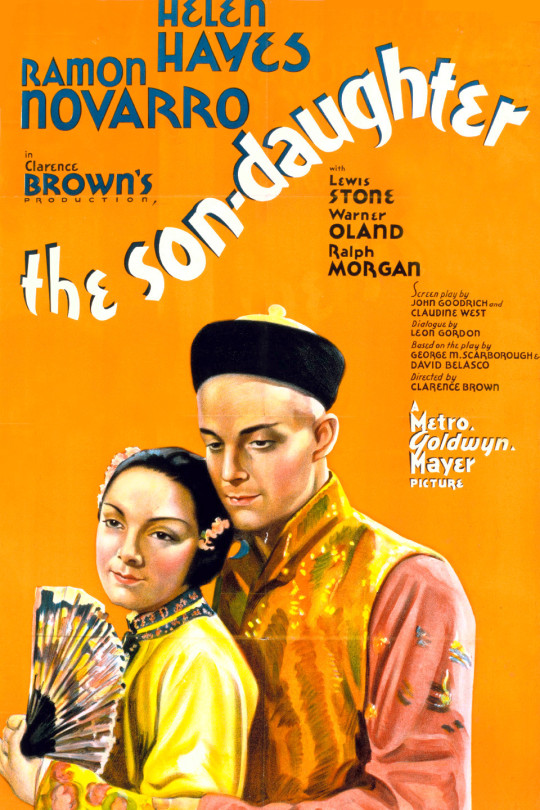

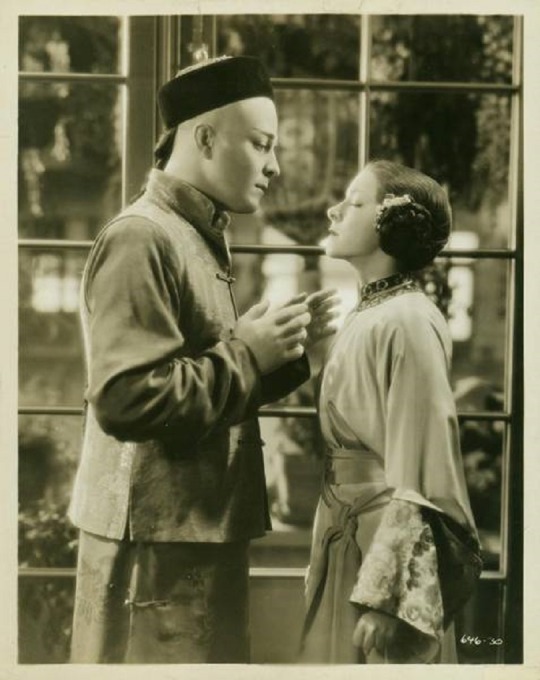

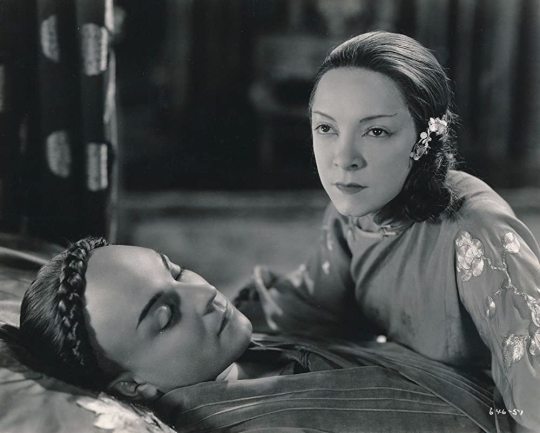
The Son-Daughter (1932) Clarence Brown
September 4th 2022
#the son-daughter#1932#clarence brown#helen hayes#lewis stone#ramon novarro#warner oland#louise closser hale#h.b. warner#frank morgan#pre-code
1 note
·
View note
Photo



Shanghai Express (Josef von Sternberg, 1932)
Cast: Marlene Dietrich, Clive Brook, Anna May Wong, Warner Oland, Eugene Pallette, Lawrence Grant, Louise Closser Hale, Gustav von Seyffertitz, Emile Chautard. Screenplay: Jules Furthman, based on a story by Harry Hervey. Cinematography: Lee Garmes. Art direction: Hans Dreier. Film editing: Frank Sullivan. Music: W. Franke Harling
There's something claustrophobic about Shanghai Express: Its characters are always enclosed -- in train cabins, in interrogation rooms, even in crowds of other people. Even the titular train gets itself into a tight spot, navigating the narrow passage through the streets of what the film calls "Peking." Which makes it all the better for Lee Garmes's camera, tasked as it is with making the most of Marlene Dietrich's face. Garmes (with director Josef von Sternberg looking over his shoulder) always finds ways to frame that face with veils and feathers and furs, with the actress's own hands, with misted windows, and when nothing else will do, a simple shaft of light caressing those eyelids, cheekbones, and lips. Fortunately, the movie is more than glamorous poses: There's a good deal of snappy dialogue and some wily character acting from the likes of Eugene Pallette, Louise Closser Hale, and -- in a role that seems to have been a kind of audition for his most famous one, Charlie Chan -- Warner Oland. I only wish that a leading man more attractive, or less plummily British, than Clive Brook had been provided for Dietrich. The story is nonsense, of course, and it verges dangerously on colonialist poppycock in its treatment of the Chinese, though even there it pulls back somewhat by turning Anna May Wong's Hui Fei from a stereotypical dragon lady into a genuinely heroic figure. It must also be said that Shanghai Express was made at the right time: A couple of years later, the sexual adventurism of its women would have been taboo under the Production Code and Hui Fei would have been made to pay for murdering her rapist.
9 notes
·
View notes
Photo










The Man Who Played God (1932)
based on a 1912 short story by Gouverneur Morris
#classic movies#old movies#black and white movies#the man who played god#story adaptation#drama film#romantic drama film#romantic movies#the loss of hearing#George Arliss#Violet Heming#Bette Davis#Louise Closser Hale#movies to watch
25 notes
·
View notes
Text
Louise Closser Hale and Joan Crawford in a publicity still for Today We Live (1933)

View On WordPress
3 notes
·
View notes
Photo

Shanghai Express
1932. Drama
By Josef von Sternberg
Starring: Marlene Dietrich, Clive Brook, Anna May Wong, Warner Oland, Eugene Pallette, Lawrence Grant, Gustav von Seyffertitz, Louise Closser Hale, Émile Chautard
Country: United States
Language: English, German, French, Mandarin
#Shanghai Express#Josef von Sternberg#Marlene Dietrich#Anna May Wong#Clive Brook#Warner Oland#Eugene Pallette#Lawrence Grant#Gustav von Seyffertitz#Louise Closser Hale#Émile Chautard#1932#1930s#pre code#Drama#United States#English#German#French#Mandarin
13 notes
·
View notes
Video
Marlene Dietrich, Anna May Wong, and Louise Closser Hale in Shanghai Express (1932)
#marlene dietrich#anna may wong#louise closser hale#shanghai express#josef von sternberg#1932#1930s#vintage#old hollywood#classic hollywood#movies#cinema#film#old movies#classic movies#classic film#actors#iconic
429 notes
·
View notes
Text
speranza, the delicate construction of
The bandit was very keen about our going into Capua after speranza, which turned out to be “hope” when I looked it up in the red dictionary, and, as John said, well worth a cab ride. We secured one, practically “hailed a passing hansom,” and the bandit and I drove into moated, ancient Capua on our errand of hope, or perhaps I should say for hope. It was sitting in front of the caffè, very fat and comfortable, and on the way back in the cab, pointed outs its engine foundry, that of “B. Speranza,” which explained everything, and a most useful man to have in such a crisis.
I left him puttering around, and went into the farmhouse with the girl, of course not into the best room with the cows — I know my place — but as close to the chimney hearth as I could get.
61
61 (same NYPL copy, via hathitrust)
John sneered at my wit. “So you think Satan could run motor cars better than I can, do you?”
“He ought to — he made ’em,” I replied. This was clever, but did not clear the air. He started to give me a lecture on my lack of appreciation of the delicate construction of an engine, and paid ours some very high-flown compliments hoping it would be flattered into moving more evenly, but it was perfectly indifferent to his wiles and went puttering up the mountain side, as though my entire future did not lie in its hands, or perhaps I should say cogs.
It was a lovely mountain too, though not at all Italian except for the fine roadbed and the pink stucco houses now and then.
189
189 (same NYPL copy, via hathitrust)
—
both ex Louise Closser Hale, A Motor Car Divorce, with drawings by Walter Hale (1906)
Louise Closser Hale (1872-1933), wikipedia
0 notes
Text
#shanghai express#film#review#criterion collection#von sternberg and dietrich in hollywood#josef von sternberg#marlene dietrich#clive brook#anna may wong#warner oland#lawrence grant#eugene pallette#gustav von seyffertitz#louise closser hale#emile chautard
0 notes
Photo






Today We Live (1933) Howard Hawks & Richard Rosson
January 3rd 2022
#today we live#1933#howard hawks#richard rosson#joan crawford#gary cooper#franchot tone#robert young#roscoe karns#louise closser hale#we live again#turn about#pre-code
21 notes
·
View notes
Photo

Myrna Loy and Ramon Novarro in The Barbarian (Sam Wood, 1933)
Cast: Ramon Novarro, Myrna Loy, Reginald Denny, Louise Closser Hale, C. Aubrey Smith, Edward Arnold, Blanche Friderici, Marcel Corday, Hedda Hopper, Leni Stengel. Screenplay: Anita Loos, Elmer Harris, based on a story by Edgar Selwyn. Cinematography: Harold Rosson. Art direction: Cedric Gibbons. Film editing: Tom Held. Music: Herbert Stothart.
Orientalist fiddle-faddle with Ramon Novarro as an Egyptian prince disguised as a translator and tour director wooing a wealthy American tourist played by Myrna Loy. Novarro is dashing and handsome, but not quite a match for Rudolph Valentino in The Sheik (George Melford, 1921), the classic film in this dubious genre. Loy is still emerging from her "exotic" phase, playing the sultry woman of the world -- she's supposedly half Egyptian on her mother's side.
4 notes
·
View notes
Photo
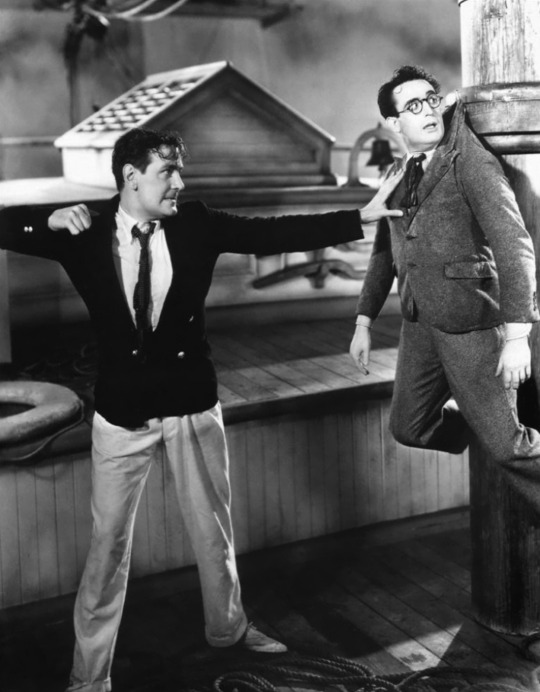


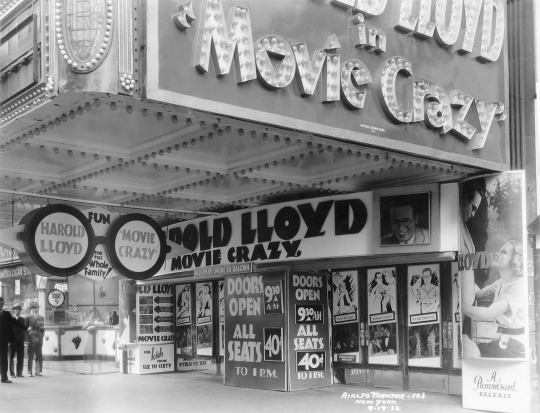
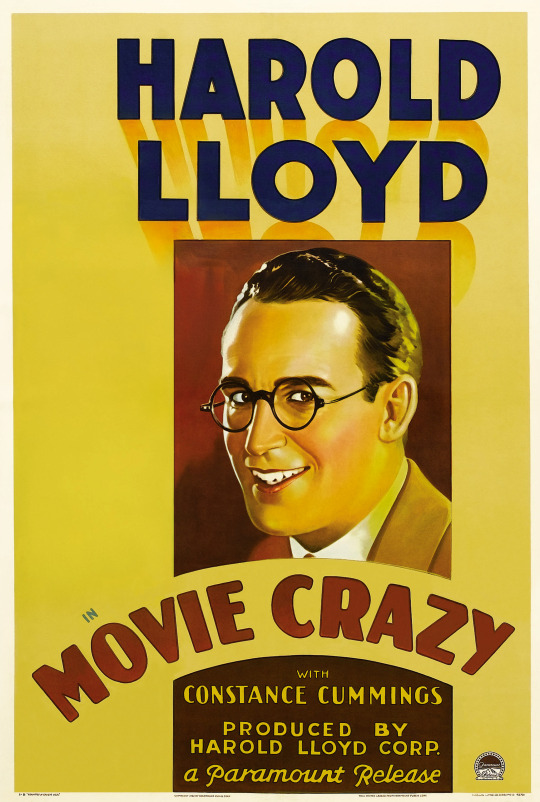
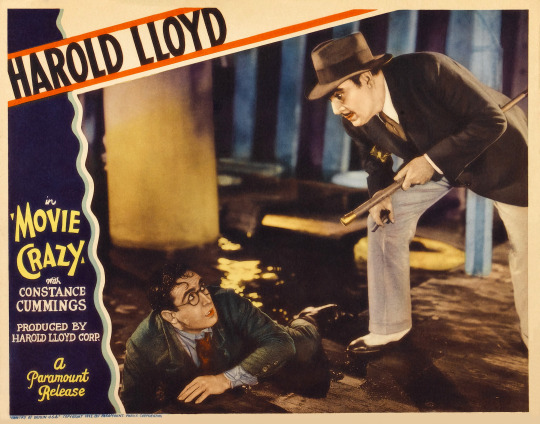
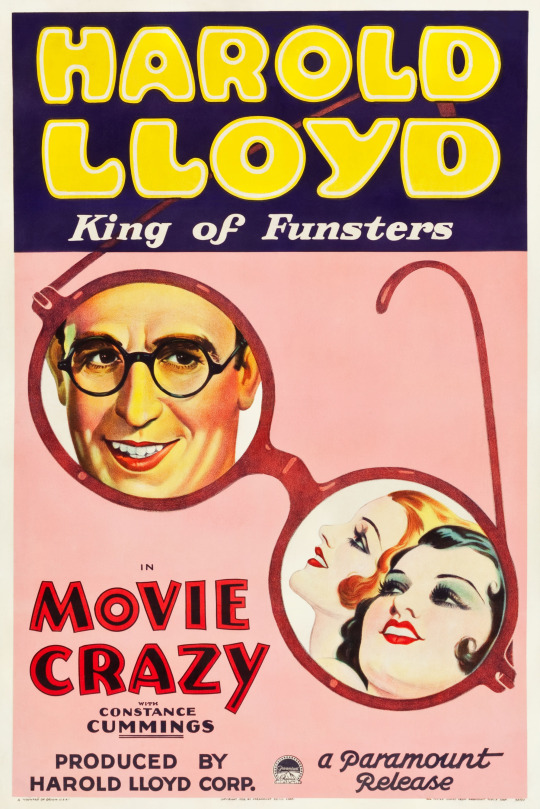
MOVIE CRAZY
Paramount Publix, 1932. Directed by Clyde Bruckman. Camera: Walter Lundin. With Harold Lloyd, Constance Cummings, Kenneth Thomson, Louise Closser Hale, Spencer Charters, Robert McWade, Eddie Fetherstone, Sydney Jarvis, Harold Goodwin, Mary Doran, De Witt Jennings, Lucy Beaumont, Arthur Housman, Noah Young, Constantine Romanoff, Grady Sutton.
3 notes
·
View notes
Text
Louise Closser Hale and Joan Crawford in a scene from Today We Live (1933)

View On WordPress
2 notes
·
View notes
Photo

Today We Live (MGM, 1933) Full-Bleed Swedish One Sheet, Fuchs Artwork
Starring Joan Crawford, Gary Cooper, Robert Young, Franchot Tone, Roscoe Karns, Louise Closser Hale, Rollo Lloyd, Hilda Vaughn, C. Montague Shaw. Directed by Howard Hawks, Richard Rosson.
#Today We Live#film#vintage#poster#are#illustration#Full-Bleed#Fuchs#swedish#1933#MGM#Joan Crawford#Gary Cooper#Howard Hawks
31 notes
·
View notes